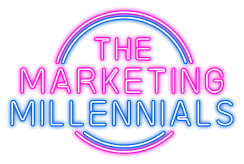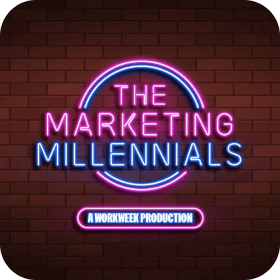1. Working with National Brands:
“Learning the difference between what your personal perception of a brand is versus the actual perception in the eyes of your audience is massively important.
Then working on the internal brand side, who you think your audience is might not actually be who they are.
From working at Whataburger, a fast food quick service restaurant big in the south, we realized what we wanted to do on social media was often a little progressive for who our actual audience was.
So we had to battle with walking that fine line.
Now I work with Crayola and the purchasers of our product are parents, not kids. We have to keep that in mind.
The users of our product fully rely on their parents to buy the product, the kids aren’t on social media but the parents are so we need to capture their attention and speak in a tone that resonates with them.
(This takes EXCEPTIONAL Marketing.)
2. A Massive 4 Year Change:
In 2019, influencer programs were on the come up. We were just launching our influencer program when I was at Whataburger, and now in 2023 almost all brands have influencer programs.
There has been a transition from really big influencers bringing in the money, getting the good brand deals, to now the focus is heavily on micro and nano influencers, especially on a platform like TikTok.
Everything is incredibly curated to the individual that nano influencers and micro influencers with smaller followings tend to have highly engaged audiences that really trust the content creator (TRUST IS EVERYTHING).
At this point, everybody’s kind of an influencer. Even if you’re not getting the deals officially from a brand, there is a lot more influence horizontally than vertically at this point.
3. Underrated Twitter Strategy:
I don’t see a lot of brands doing this anymore, but there was the “branded like” on Twitter, which I think is ingenious (I loveeee it too!!).
The “branded like” is when a user goes to like something on Twitter and instead of it being the red heart, it’s a branded emoji.
One that I really loved was for the movie Scream, where they had a slasher knife as the emoji. Even more recently, House of Dragon had one and it was the Targaryen symbol.
Those stand out because they are super expensive to do. Clearly it is very intentional whenever a brand does it.
4. Riding trends the right way:
Hop on the trend if it makes sense for your brand.
Level up your marketing game
Zero BS. Just fun, unfiltered, industry insights with the game-changers behind some of the coolest companies from around the globe.
No spam. Unsubscribe any time.
There’s a fine line between being trendy and being thirsty for attention, just trying to get on something because you want to go viral (THIS).
Consumers and users on platforms can see through that easily.
You don’t want to be that brand hopping on every single trend, just to get followers.
If it makes sense for your brand voice and the product that you have, go for it. But always double check that your use case actually makes sense, trends can go bad pretty quickly.
It can be really hard because brands have different accounts on social media than regular users.
On TikTok if there’s something trending with a movie’s music in it, a brand probably can’t hop on it because of the licensing with the music.
Whereas creator accounts have access to it, but if you’re a business account on TikTok, they’re not going to give you permission to use that song because the licensing is different for a brand versus a casual content creator.
5. The easiest platform to grow on:
It is easier right now to grow on TikTok than any other social media platform, just because of the amount of users that TikTok has that are new and engaged.
A lot of people have Facebook, but I wouldn’t say that all of those Facebook accounts are active users, versus on TikTok, even if you’re not posting, you’re liking stuff and have a very curated FYP.
(My FYP knows I love breakfast tacos – LOL.)
TikTok is interest-based. Brands are easier to pop up on a feed where Instagram back in the day, you had to either follow a brand or be a raving fan of that brand.
Now you can organically discover, but it’s not at the level of TikTok.
Instagram now you don’t natively see all of your friends from high school or college, it’s mostly ad driven.
(And the ads are so incredibly well-targeted, always showing me products I’m dying to buy.)
6. How to hire for social:
You need to separate tasks by jobs very specifically. It’s complete BS to get hired for a company as a social media person…
But then there’s not enough team or resources to support that role and they expect you to be a data analyst, videographer, graphic designer, and the brand manager. All of those are significantly different jobs.
(Shoutout to all the one-person team Marketers <3.)
If you hire somebody in one of those roles, be really mindful of the job description.
It’s happened to me where you get hired for one thing and then they find out you have another skill, and then that slowly gets inputted into your job description and you don’t get compensated for it.
7. Want to get started in social, read this:
Case studies are a very interesting way to go about learning about brands, along with hands-on internships.
Those are your best bets to show you if you tend to prefer the brand side or if you might be better at an agency.
One of my favorite classes in college was an immersive advertising class where we paired up and made agencies within the class. And we had a client that was a local San Antonio museum and we created a campaign for them, making all the materials, writing all the copy.
From that I realized I have all the skill sets to work at an agency.
So the more hands on experience you can get at any capacity will help prepare you for what working in the industry actually feels like.”


